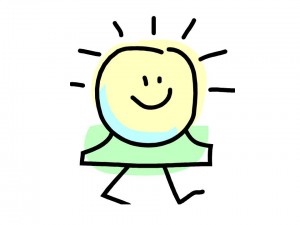 It’s year-end, so the forecasts abound whether we’re talking about trends in technologies, products and services. Gartner says cloud and mobile computing are hot, but managing customer expectations will require heavy lifting On the food front, Epicurious predicts that food halls will be all the rage (think Harrods in London or Takashimaya in Tokyo), Korean cuisine in demand, and sweet potatoes crowned the vegetable of 2011. For colors, Pantone is Queen and they see that honeysuckle (a salmon-pink) is the new black.
It’s year-end, so the forecasts abound whether we’re talking about trends in technologies, products and services. Gartner says cloud and mobile computing are hot, but managing customer expectations will require heavy lifting On the food front, Epicurious predicts that food halls will be all the rage (think Harrods in London or Takashimaya in Tokyo), Korean cuisine in demand, and sweet potatoes crowned the vegetable of 2011. For colors, Pantone is Queen and they see that honeysuckle (a salmon-pink) is the new black.
In health technology, there’s no better list to read than CSC’s The Future of Healthcare: It’s Health, Then Care, which offers up top 10 technologies that CSC analysts say, “demonstrate the power of technology and brilliant minds to improve health outcomes.”
CSC’s top ten technologies to improve health outcomes are:
- Intelligent pills to deliver targeted medication doses
- Sensors for tracking medication adherence
- Brain implants, e.g., to prevent seizures
- Contact lens with microchip to detect glaucoma
- Artificial pancreas for diabetics
- Bioprinting, creating new skin
- Artificial retina
- Video games for med students to hone decision making skills
- Robots as care assistants
- Lab-on-a-chip.
These technologies are discussed in CSC’s report, which begins with a chapter called Wellness First, discussing a health system build around keeping people well and healthy.
“In the future of healthcare,” the report predicts, “the practice of medicine (how treatment is delivered) follows a care team model with new roles and new members, where wellness comes first, then early detection, and then more effective, medically-advanced treatments.”
CSC points out several factors that are already disrupting health care systems globally that will help move toward a “health first, then health care” ethos. These include the growth of empowered patients through health information and online networks and tools, earlier detection, high-tech healing, remote health and online communities, and a global health care ecosystem of research and connected health.
Health Populi’s Hot Points: Reading CSC’s report was a sort of déjà vu for me as I reflected back on the forecasting work I did with Institute for the Future in the 1990s and into the early 2000s. Way back then, we were envisiioning of “health, then health care” for the Robert Wood Johnson ten-year forecast.
What I learned from my great colleagues at IFTF was that we tend to over-estimate a new technology in the short-run, and under-estimate it in the longer term. Just as so many of us predicted that electronic health records would gain traction sooner than the 2010s, the kinds of technologies we long for as identified in the CSC report might not gain mainstream market penetration for another decade or longer. Much of that depends on health care financing models, medical education, and just how empowered health citizens really want to become. In each of these change-categories, there are pioneers today — patient-centered medical homes and “Kais-inger” (Kaiser and Geisinger systems), a handful of innovative med school programs teaching participatory health, and the small cadre of e-Patient Dave‘s, et. al.
But when that CSC “Future” will happen is anybody’s guess given the complex market that is health care, whether in the U.S., the U.K., Denmark or Japan.




 Thank you, Jared Johnson, for including me on the list of the
Thank you, Jared Johnson, for including me on the list of the  I am so grateful to Tom Lawry for asking me to pen the foreword for his book, Health Care Nation,
I am so grateful to Tom Lawry for asking me to pen the foreword for his book, Health Care Nation,  Thanks to Feedspot for naming this blog, Health Populi, as a
Thanks to Feedspot for naming this blog, Health Populi, as a